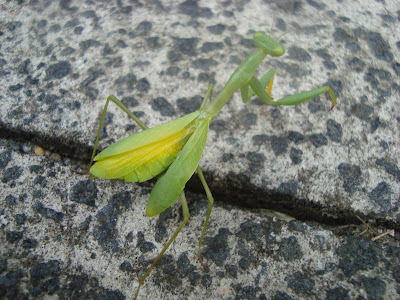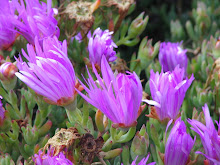
Kenal tak mentadak mentadu ni? Dah lama aku tak jumpa kawan lama ni tapi sejak akhir2 ni banyak pulak binatang ni kat rumah. Mungkin sebab banyak pokok buluh kat depan tu .......
Ikhwan ngan Luqman cukup takut ngan mentadak ni, Ikhwan panggil tadak tadu. Kalau tanya camana Ikhwan sleep? Dia pun jawab krooooooohhhhh. Entah kenapa bila tengok mentadak ni teringat belalang sawah sebab warna dia sama. Masa kekecik dulu kalau pegi kat sawah depan rumah Encik tu, kami cari belalang, dapat beberapa ekor kami pun bakar pastu makan. Sedap!!! Bau dia pun tersangatlah harumnya. Kalau tak cari belalang, kami gi mancing. Aku memang tak de bakat memancing ..... madang tak dapat ikan. Tapi sepupu sepapat yang lain selalulah dapat ikan. Pernah sekali kami pi "bondar" menimba, dapat banyak ikan, ada belut lagi. Encik siang belut tu dan goreng. Sedap rasa dia cam ayam. Kalau tak memancing, aku kadang join sepupu lelaki main rounders atau bola. Seronoknya masa tu..... fikiran tak runsing, main, main dan main.
Sedikit keterangan mengenai Mentadak dari sumber yang berikut:- (Sekadar menambah sedikit ilmu) http://animals.nationalgeographic.com/animals/enlarge/praying-mantis_image.html
The praying mantis is named for its prominent front legs, which are bent and held together at an angle that suggests the position of prayer. The larger group of these insects is more properly called the praying mantids. Mantis refers to the genus mantis, to which only some praying mantids belong.
By any name, these fascinating insects are formidable predators. They have triangular heads poised on a long "neck," or elongated thorax. Mantids can turn their heads 180 degrees to scan their surroundings with two large compound eyes and three other simple eyes located between them.Typically green or brown and well camouflaged on the plants among which they live, mantis lie in ambush or patiently stalk their quarry. They use their front legs to snare their prey with reflexes so quick that they are difficult to see with the naked eye. Their legs are further equipped with spikes for snaring prey and pinning it in place.Moths, crickets, grasshoppers, flies, and other insects are usually the unfortunate recipients of unwanted mantid attention. However, the insects will also eat others of their own kind. The most famous example of this is the notorious mating behavior of the adult female, who sometimes eats her mate just after—or even during—mating. Yet this behavior seems not to deter males from reproduction.Females regularly lay hundreds of eggs in a small case, and nymphs hatch looking much like tiny versions of their parents.
Type: Bug
Diet: Carnivore
Average lifespan in the wild: 12 Months
Size: 0.5 to 6 in (1.2 to 15 cm) long
Did you know? Praying mantids’ excellent eyesight allows some to see movement up to 60 feet (18 meters) away.
Size relative to a tea cup:


1 comment:
buy viagra cheap viagra on line viagra side affects does viagra really work viagra larger forever cheapest uk supplier viagra buy viagra australia viagra rrp australia cheap viagra tablets female use of viagra viagra logo does viagra really work viagra and hearing loss viagra rrp australia cost
Post a Comment